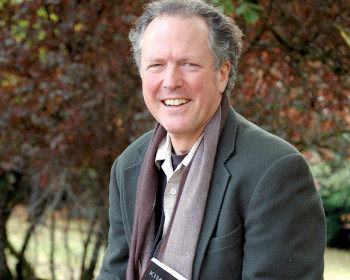A scholar/activist examines the psychology of the Occupy movement
Open gallery

In late 2011, Professor of Counseling Psychology Tod Sloan launched the OccuPsy project. Through a Facebook group page, he invited colleagues around the world to apply a critical psychology lens to the Occupy Wall Street movement, posing the question, “What is the essence of Occupy at the psychosocial level?” As a participant-researcher who attended many of the Occupy Portland demonstrations and planning meetings, Sloan became intrigued by what he calls the activists’ “amazing capacity to tolerate chaos, confusion and frustration,” but wondered what it would take for more mainstream citizens to identify with the movement and participate.
Since early 2012, a group of almost 200 from around the world has maintained the OccuPsy Facebook page, where they post insights and reflections, and organize local discussion groups in Portland and Berkeley.
Sloan observes that Americans generally struggle with communal participation because they seek rewards for individual work, compete for power, and find satisfaction in individualized experiences of consumerism. In a forthcoming paper, he writes, “many of us are afraid of what happens when we come together,” and suggests that one of the most compelling aspects of the Occupy movement is how effectively it fulfilled the basic psychological desire to be “recognized as human by another human.” He writes, “For many of us in the United States, whether we marched or camped, or just observed with amazement, it was a singular moment of empowerment.”
Sloan’s critical psychology approach links psychological inquiry more directly to social transformation. According to Sloan, “Critical psychologists participate directly in the process of change and don’t really try to have an objective outsider position. We have found that scientific neutrality is not possible and tends to support the status quo.” Sloan visited Occupy encampments and strategic planning meetings as a scholar working to enact change, not just to record observations.
Sloan suggests that although it is less visible since the public park occupations ended in early 2012, the Occupy movement is still strong, and still animated by the spirit of community. When activists moved out of parks, many shifted directly into grassroots campaigns around issues like student loans, home foreclosures, and immigration rights. Meanwhile, a Portland OccuPsy group is currently convening dialogues to reflect on the local experience of Occupy and find ways to stimulate interest among those who have not felt invited into the movement.
For Sloan, the continuity of dialogue is evidence of Occupy’s legacy as a sweeping social movement, not merely a spectacle, containing “a sense of real possibility for change after decades of feeling like nothing would happen.”
Graduate Communications is located in room 205 of Rogers Hall on the Graduate Campus.
voice 503-768-6054
fax 503-768-6053
Graduate Communications
Lewis & Clark
615 S. Palatine Hill Road
Portland OR 97219

